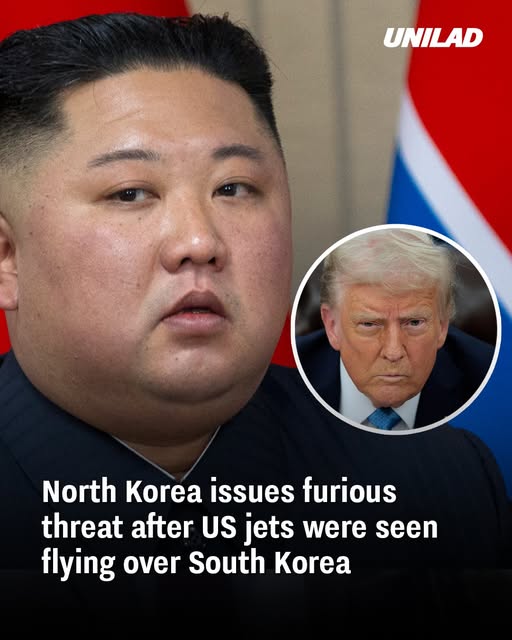Tensions on the Korean Peninsula have escalated as North Korea has issued stern warnings in response to recent U.S. military activities. The deployment of American B-1B bombers over South Korea during joint exercises has been labeled by Pyongyang as a “grave provocation,” prompting threats of a “powerful force” response.
U.S. and South Korea Conduct Joint Military Drills
On April 15, 2025, the United States and South Korea conducted joint aerial drills involving B-1B long-range bombers, F-35, and F-16 fighter jets. These exercises aimed to enhance operational readiness and demonstrate deterrence against North Korea’s nuclear threats. The timing coincided with North Korea’s celebration of the 113th birthday of state founder Kim Il Sung, a significant national holiday known as the “Day of Sun.” This overlap is likely to provoke a strong reaction from Pyongyang, especially after recent tensions.
North Korea’s Condemnation and Threats
In response to the drills, North Korea’s Defense Ministry issued a statement condemning the exercises as an “open threat” and a “grave provocation.” The ministry warned that the military tension in the region has been raised to an “extreme, dangerous level” and vowed to “deter by dint of powerful force” any aggressive attempts by the U.S. North Korea perceives such joint military exercises as rehearsals for invasion, particularly resenting the deployment of strategic U.S. assets.

Historical Context of Military Exercises
The U.S. and South Korea regularly hold joint exercises, which they describe as defensive. However, North Korea views them as hostile threats to its sovereignty. In past instances, North Korea has reacted to such exercises with missile tests and other military demonstrations. For example, in February 2025, North Korea condemned a similar flyover as a provocation and followed it with cruise missile tests.
International Reactions and Diplomatic Efforts
The international community has expressed concern over the escalating tensions. Former U.S. President Donald Trump reiterated his personal rapport with North Korean leader Kim Jong Un, expressing hope for renewed diplomatic engagement. Despite his comments about ongoing communication, no active negotiations have been reported, and North Korea has not publicly acknowledged his outreach.
Increased Tensions and Military Buildup
North Korea’s recent statements reflect growing frustration with the perceived threat of U.S.-South Korean military collaboration. State-run media in Pyongyang have accused Washington of escalating the situation deliberately, framing the exercises as an act of aggression that could push the region “to the brink of war.” Analysts note that these types of warnings are not uncommon, but the frequency and intensity of North Korea’s rhetoric have increased notably in recent months. In response, South Korea has reaffirmed its alliance with the United States and emphasized the defensive nature of the joint operations. A spokesperson for South Korea’s Defense Ministry stated, “These exercises are necessary for maintaining peace and security on the peninsula. We will not be intimidated by reckless threats.” The South Korean government has also urged the North to return to dialogue and halt provocative behavior, such as missile launches or threats of pre-emptive strikes.

Conclusion
The recent developments underscore the fragile security situation on the Korean Peninsula. As both sides continue to engage in military demonstrations, the risk of miscalculation increases. The international community urges restraint and calls for renewed diplomatic efforts to de-escalate tensions and promote stability in the region.

















